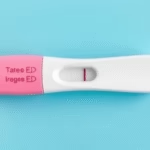Understanding Blood Clot in Implantation Bleeding
The term blood clot in implantation bleeding refers to the presence of a blood clot during the early stages of pregnancy, specifically when the embryo implants itself into the uterine lining. This process typically occurs around 6 to 12 days after conception when a fertilized egg travels through the fallopian tube and attaches to the uterus.
During this implantation, some women may experience light bleeding or spotting, often referred to as implantation bleeding. This bleeding can occasionally include small blood clots. Understanding this phenomenon is crucial, as it can be a common occurrence for many women, although the presence of clots can sometimes lead to confusion and concern about the health of the pregnancy.
What Causes Implantation Bleeding?
Implantation bleeding occurs as the fertilized egg burrows into the endometrium, the uterine lining. As it embeds itself into the tissue, small blood vessels can be damaged, leading to minor bleeding. In some cases, blood may pool and form clots before being expelled. It’s essential to understand this process, as it is a natural part of early pregnancy for many women.
The hormonal changes associated with pregnancy can also affect blood flow and clotting. Increased estrogen levels increase blood circulation within the reproductive system, which may contribute to clot formation at the site of implantation. While the presence of small blood clots may be frightening, they are usually harmless if accompanied by light bleeding.
Women should track the color, flow, and duration of any bleeding or clotting to understand whether it is a regular part of implantation or something that requires medical attention.
Signs of Implantation Bleeding
Recognizing implantation bleeding is essential for early pregnancy detection. Women often describe the following signs:
- Timing: Implantation bleeding typically occurs about 10 days after conception.
- Color: The bleeding is usually light pink or brown, distinguishing it from menstrually heavy flow.
- Flow: Generally, it is lighter than menstrual bleeding and does not last long—usually only a few hours to a couple of days.
- Cramps: Mild cramping may accompany implantation bleeding, but it is usually less intense than menstrual cramps.
- Accompaniment: Light spotting may occur without any other symptoms.
Being aware of these signs can help women differentiate between normal implantation bleeding and potential issues that may require medical attention.
When to Seek Medical Attention
While many women experience normal implantation bleeding, knowing when to consult a healthcare professional is crucial. Consider seeking immediate help if:
- The bleeding is heavy, similar to a menstrual flow.
- Clots are larger than a quarter.
- The bleeding lasts more than a few days.
- Accompanying symptoms include severe pain, dizziness, or fainting.
These symptoms could indicate complications, such as an ectopic pregnancy or miscarriage, which require prompt medical evaluation. It is better to err on the side of caution and discuss any concerns with a medical provider.
Difference Between Implantation Bleeding and Menstrual Period
Distinguishing between implantation bleeding and a menstrual period can be challenging for many women. Here are several key differences:
- Timing: Implantation bleeding occurs about a week before the next expected period.
- Color: Implantation bleeding is often pink or brown, while menstrual blood is typically bright red.
- Flow: Implantation bleeding is lighter and usually does not require a pad or tampon, as opposed to a menstrual period.
- Duration: Implantation bleeding lasts a few hours to a couple of days, whereas menstrual periods generally last longer.
Being aware of these differences can help women better understand their bodies during early pregnancy.
How to Manage Mild Bleeding and Clots
For women experiencing mild implantation bleeding and small clots, management is typically straightforward. Follow these guidelines:
- Rest: Ensure to take breaks and reduce physical exertion during the early stages of pregnancy.
- Monitor: Keep track of bleeding patterns, color, and any accompanying symptoms.
- Stay Hydrated: Proper hydration is essential for overall health and can help in maintaining proper blood circulation.
- Consult Healthcare Provider: If unsure, discuss any bleeding or clot concerns with a healthcare provider for reassurance and guidance.
Implementing these steps can help manage early symptoms and ensure a healthy pregnancy.
Potential Risks Associated with Blood Clot in Implantation Bleeding
While many instances of blood clots during implantation bleeding are harmless, some risks can be associated with complications during pregnancy:
- Ectopic Pregnancy: A fertilized egg implanting outside the uterus can lead to bleeding and clot formation, representing a medical emergency.
- Miscarriage: If bleeding is heavy and accompanied by pain, it could signify a potential miscarriage, requiring prompt assessment.
- Hormonal Imbalance: Changes may affect blood clotting and the overall health of the pregnancy.
Awareness of these risks provides women with the knowledge needed to seek timely interventions, which can be crucial for maternal and fetal well-being.
Myths Surrounding Implantation Bleeding
Several myths can contribute to misinformation about implantation bleeding and clots:
- All women experience it: Not all women will experience implantation bleeding. It is common but not universal.
- It indicates a problematic pregnancy: Light spotting is often normal; heavy bleeding with clots may require medical attention.
- Only pregnant women have clotting issues: Women may experience varying degrees of clotting throughout their menstrual cycles.
Understanding these myths can empower women to feel more confident about interpreting their symptoms and seeking appropriate care when necessary.
Final Thoughts
The phenomenon of blood clot in implantation bleeding is a topic that evokes interest and concern among many women trying to understand their early pregnancy experiences. While bleeding during implantation can cause anxiety, knowing that it is usually minimal and often harmless can ease worries. Recognizing the signs, understanding differences from menstrual bleeding, and knowing when to seek medical advice are important aspects of managing early pregnancy symptoms.
Women should be aware of their bodies and track any changes. Familiarizing themselves with the signs and distinguishing features of implantation bleeding can empower women to make informed decisions about their health. It is vital to communicate with healthcare professionals about any concerns or unusual symptoms throughout the pregnancy journey. Open dialogue can lead to reassurance and necessary interventions, ensuring health and safety for both the mother and the developing fetus.
Frequently Asked Questions
- Is it normal to have blood clots during implantation bleeding?
Yes, small blood clots can occur during implantation bleeding and are generally considered normal as the embryo attaches to the uterine lining. - How long does implantation bleeding last?
Implantation bleeding typically lasts a few hours to a couple of days. If it persists longer, a medical consultation is advised. - What color is implantation bleeding?
Implantation bleeding is usually light pink or brown, unlike the bright red commonly seen in menstrual bleeding. - When should I seek help for implantation bleeding?
If the bleeding is heavy, lasts longer than a few days, or is accompanied by severe pain, dizziness, or fainting, seeking medical attention is essential. - Can stress cause implantation bleeding?
Stress is not directly linked to implantation bleeding, though it can affect hormonal balance and overall health, impacting pregnancy.
Further Reading
What Type of Psychotherapy Is Best for Anxiety?







